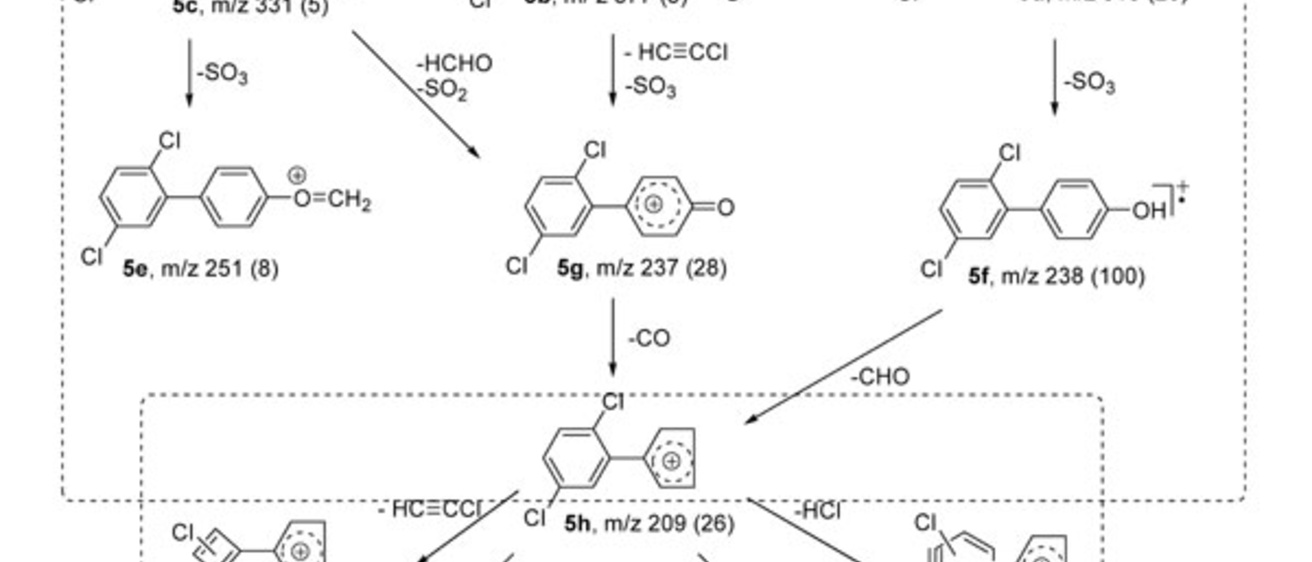Main navigation
PCB sulfate monoesters are currently investigated by Project #3. Their sensitive and selective analysis by gas chromatography-mass spectrometry (GC-MS) requires their derivatization, for example, as PCB 2,2,2-trichloroethyl (TCE) sulfate monoesters. To aid in the identification of unknown PCB sulfate metabolites isolated from biological samples, the electron impact MS fragmentation pathways of selected PCB TCE sulfate diesters were analyzed and compared to the fragmentation pathways of the corresponding methoxylated PCBs. As shown for sulfuric acid 2´,5´-dichlorobiphenyl-4yl ester 2,2,2-trichloroethyl ester, the most abundant and characteristic fragment ions of PCB TCE sulfate diesters were formed by releasing CHCCl3, SO3, HCl2 and/or CCl3 from the TCE sulfate moiety and Cl2, HCl, ethyne and chloroethyne from an intermediate phenylcyclopentadienyl cation. Knowledge of the fragmentation patterns of PCB TCE sulfate diesters will greatly aid in determining the position of sulfate moiety (ortho vs. meta/para) of unknown PCB sulfate metabolites isolated from environmental or laboratory samples (Li et al., Chem. Cent. J., 2009).

